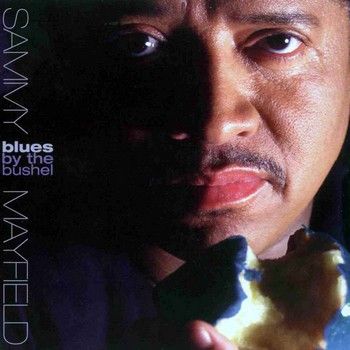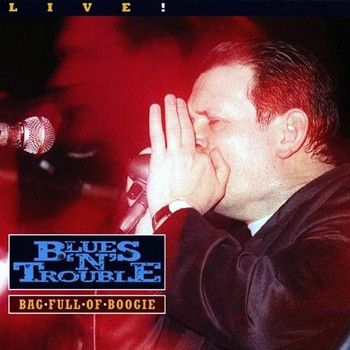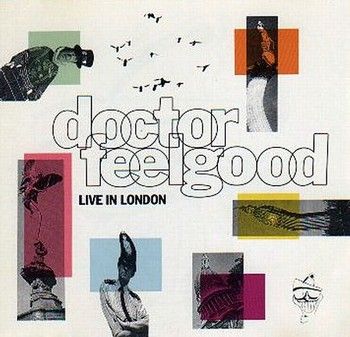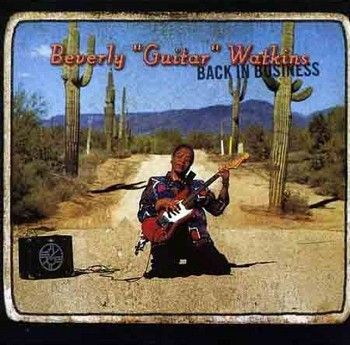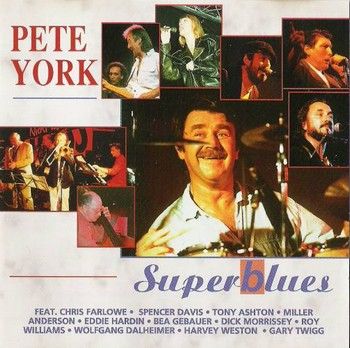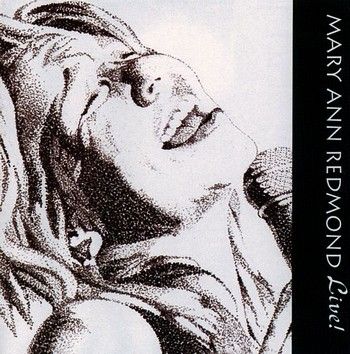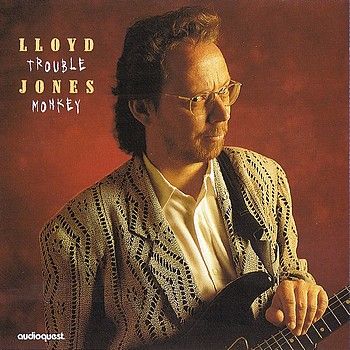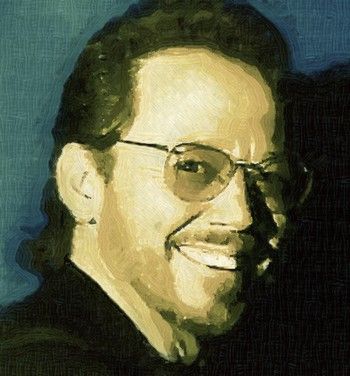
An anonymous donor sent me this cd recently, its title having agonisingly lingered on my wish list for some time. I can only proffer my apologies to Mr Fame for having taken so long to discover this album's excellence and to my generous benefactor a humble and most appreciative thank you. Mr Fame is a legend in his own right, with a career spanning some forty years, he needs no introduction. Originally a blues aficionado his skills began to lend to the jazz genre in the early eighties. Mr Fame is indeed a talented man and has that rare pleasure of being not only a first class vocalist but a talented musician too. I'm blessed too have his title "Name Droppin" (Live) and I didn't really think it could be beat. But of course Mr Fame pulls off excellence with frightening ease time and time again and this album exudes the essence of an album that was a joy to produce. A self-contained and extraordinary album, it flows effortlessly in its excellence from track one to track thirteen all too disappointingly soon. I normally like to quote my favourite track but dam, aint it so hard to do. Maybe its Moondance but then maybe its Yeah, Yeah .... no its definitely It Should Have Been Me ... no wait its Georgia ..... all wonderful classics in their own right and if my humble opinion is worth anything you should stop reading this and go press the purchase button. – from ***** SPLENDIFEROUS !!!, June 26, 2002 By & © H. J. Sandford "jazzyjaney" (Yorkshire, England) © 1996-2013, Amazon.com, Inc. or its affiliates http://www.amazon.com/Cool-Cat-Blues-Georgie-Fame/product-reviews/B00005AQI8/ref=dp_top_cm_cr_acr_txt/187-6829984-0203647?ie=UTF8&showViewpoints=1
“The hardest part of making this album was chosing the material - the musicians kind of chose themselves (anybody you called to perform on a Georgie Fame session immediately said yes). Because Georgie is equally adept at blues, R&B and bebop, we narrowed the repertoire down to our favorites from the books of Louis Jordan, Ray Charles, Mose Allison, Hoagy Carmichael, Van Morrison (Georgie's band-mate at the time) and of course several of his sophisticated originals”. – Ben sidran from Go Jazz, 1989
Ben Sidran assembled some of the best jazz players in the business to record “Cool Cat Blues” with the celebrated Georgie Fame. Some of the great musicians on this album include the late Hugh McCracken, Van Morrison, Boz Scaggs, Steve Gadd, and Robben Ford, and these guys don’t appear on any old rubbish. Apart from the great vocal standards, there is a great reworking of Georgie’s "Yeah Yeah" and a dynamic version of Van Morrison's classic "Moondance". The legendary vocalist, songwriter, and keyboardist Georgie Fame remains one of the great British jazz and R&B musicians. This album is VHR by A.O.O.F.C. The "Shorty featuring Georgie Fame" album is @ http://overdoseoffingalcocoa.blogspot.com/2009/06/georgie-fame.html Try and listen to the Georgie Fame & Alan Price “Together” album [All tracks @ 320 Kbps: File size = 158 Mb]
TRACKS/ COMPOSERS
1 Cool Cat Blues - Georgie Fame & Alexander Ryan 4:05
2 Every Knock Is a Boost - Georgie Fame, Louis Jordan, B. Waters 5:15
3 Moondance - Van Morrison 6:44
4 It Should Have Been Me - Memphis Curtis 5:02
5 Yeah Yeah - Rodgers Grant & Jon Hendricks 5:05
6 I Love the Life I Live, I Live the Life I Love - Willie Dixon 3:17
7 Big Brother - Mose Allison 4:58
8 Georgia on My Mind - Hoagy Carmichael & Stuart Gorrell 5:11
9 Cat's Eyes - Georgie Fame 6:17
10 You Came a Long Way from St. Louis - John Benson Brooks & Bob Russell 4:30
11 Survival - Georgie Fame & Alexander Ryan 9:00
12 Little Pony - Neal Hefti & Jon Hendricks 2:40
13 Rocking Chair - Hoagy Carmichael 3:58
MUSICIANS
Robben Ford, Hugh McCracken - Guitar
Dennis Irwin, Will Lee - Bass
Georgie Fame - Organ, Piano, Horn Arrangements, Vocals
Richard Tee - Organ, Piano, Acoustic & Electric Piano
Michael Weiss - Piano
Steve Gadd - Drums
Ralph MacDonald - Percussion
Ben Sidran - Tambourine, Vocals
Ronnie Cuber, Lawrence Feldman - Saxophone
Bob Malach - Saxophone, Horn Arrangements
Boz Scaggs, Jon Hendricks - Vocals
Van Morrison - Vocals, Vocal Ad-Libs
BIO
Georgie Fame's swinging, surprisingly credible blend of jazz and American R&B earned him a substantial following in his native U.K., where he scored three number one singles during the '60s. Fame played piano and organ in addition to singing, and was influenced by the likes of Mose Allison, Booker T. & the MG's, and Louis Jordan. Early in his career, he also peppered his repertoire with Jamaican ska and bluebeat tunes, helping to popularize that genre in England; during his later years, he was one of the few jazz singers of any stripe to take an interest in the vanishing art of vocalese, and earned much general respect from jazz critics on both sides of the Atlantic.
Fame was born Clive Powell on June 26, 1943, in Leigh, Lancashire (near Manchester, England). He began playing piano at a young age, and performed with several groups around Manchester as a teenager, when he was particularly fond of Fats Domino and Jerry Lee Lewis. In 1959, his family moved to London, where the 16 year old was discovered by songwriter Lionel Bart (best known for the musical Oliver). Bart took Powell to talent manager Larry Parnes, who promoted British rockers like Billy Fury, Marty Wilde, Johnny Gentle, and Vince Eager. Powell naturally had to be renamed as well, and as Georgie Fame, he played piano behind Wilde and Eager before officially joining Fury's backing band, the Blue Flames, in the summer of 1961. (the Blue Flames also included guitarist Colin Green, saxophonist Mick Eve, bassist Tony Makins, and drummer Red Reece.) When Fury let the band go at the end of the year, Fame became their lead singer, and they hit the London club circuit playing a distinctive blend of rock, pop, R&B, jazz, and ska. Their budding reputation landed them a residency at the West End jazz club the Flamingo, and thanks to the American servicemen who frequented the club and lent Fame their records, he discovered the Hammond B-3 organ, becoming one of the very few British musicians to adopt the instrument in late 1962. From there, the Blue Flames became one of the most popular live bands in London. In 1963, they signed with EMI Columbia, and in early 1964 released their acclaimed debut LP, Rhythm and Blues at the Flamingo. It wasn't a hot seller at first, and likewise their first three singles all flopped, but word of the group was spreading. Finally, in early 1965, Fame hit the charts with "Yeh Yeh," a swinging tune recorded by Latin jazz legend Mongo Santamaria and given lyrics by vocalese virtuoso Jon Hendricks of Lambert, Hendricks & Ross. "Yeh Yeh" went all the way to number one on the British charts, and Fame started living up to his stage name (although the song barely missed the Top 20 in America). His 1965 LP Fame at Last reached the British Top 20, and after several more minor hits, he had another British number one with "Getaway" in 1966. After one more LP with the original Blue Flames, 1966's Sweet Thing, Fame broke up the band and recorded solo; over the next few years, his backing bands included drummer Mitch Mitchell (later of the Jimi Hendrix Experience) and the young guitarist John McLaughlin (Miles Davis, Mahavishnu Orchestra). At the outset, Fame's solo career was just as productive as before, kicking off with the Top Ten big-band LP Sound Venture (recorded with Harry South's orchestra); thanks to its success, he toured with the legendary Count Basie the following year. Several hit singles followed over the next few years, including "The Ballad of Bonnie and Clyde," which became his third British chart-topper in late 1967 and, the following year, his only Top Ten hit in America. But by 1969, his success was beginning to tail off; hoping to make inroads into the more adult-oriented cabaret circuit, Fame was moving more and more into straight-up pop and away from his roots. In 1971, he teamed up with onetime Animals organist Alan Price and recorded an album of critically reviled MOR pop, Fame & Price; the partnership produced a near-Top Ten hit in "Rosetta," but ended in 1973. Fame re-formed the Blue Flames with original guitarist Colin Green in 1974 and attempted to return to R&B, but his records for Island attracted little attention. He spent much of the '70s and '80s making ends meet by performing on TV and the cabaret circuit, as well as writing advertising jingles; he also continued to make records, to little fanfare. In 1989, Fame played organ on Van Morrison's Avalon Sunset album, which grew into a fruitful collaboration over the course of the '90s; Fame played on all of Morrison's albums through 1997's The Healing Game, received co-billing on Morrison's 1996 jazz album How Long Has This Been Going On, and even served a stint as Morrison's musical director. Meanwhile, Fame's own solo work during the '90s received some of his best reviews since the '60s, starting with 1991's jazzy Cool Cat Blues, which featured a duet with Morrison on "Moondance." 1995's Three Line Whip featured his sons Tristan and James Powell on guitar and drums, respectively, and 1996's The Blues and Me further enhanced his growing jazz credibility. In 1998, Fame split with Morrison to record and tour with former Rolling Stones bassist Bill Wyman's new group the Rhythm Kings, contributing organ and vocals to several albums. In 2000, now signed to Ben Sidran's Go Jazz label, Fame released the acclaimed Poet in New York, which established him as an impressive student of jazz's vocalese. © Steve Huey © 2013 Rovi Corp | All Rights Reserved http://www.allmusic.com/artist/georgie-fame-mn0000543055


